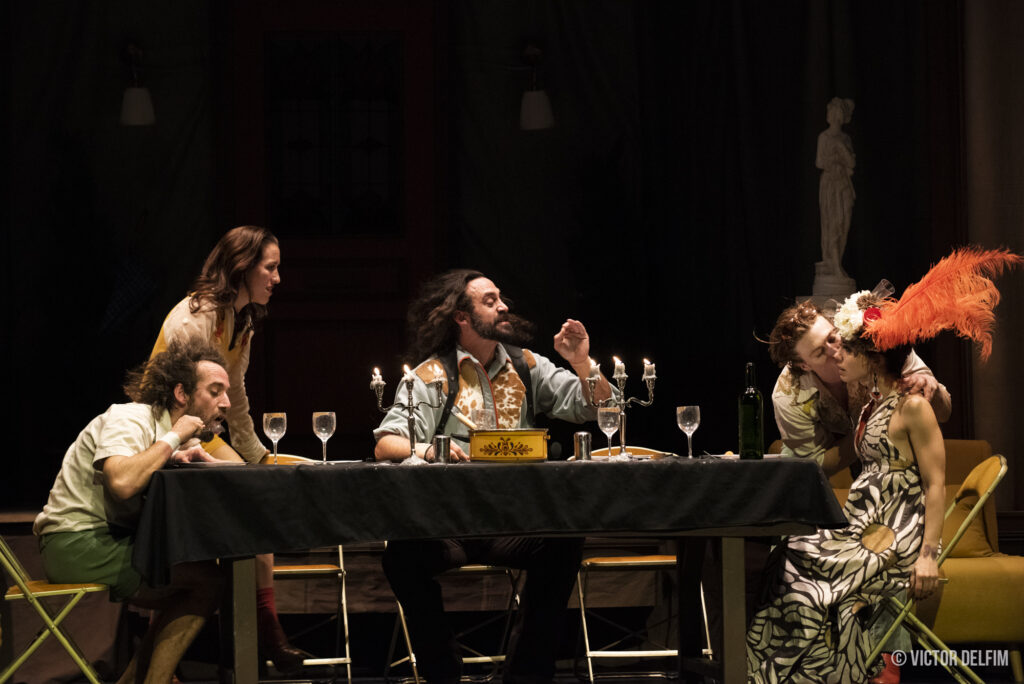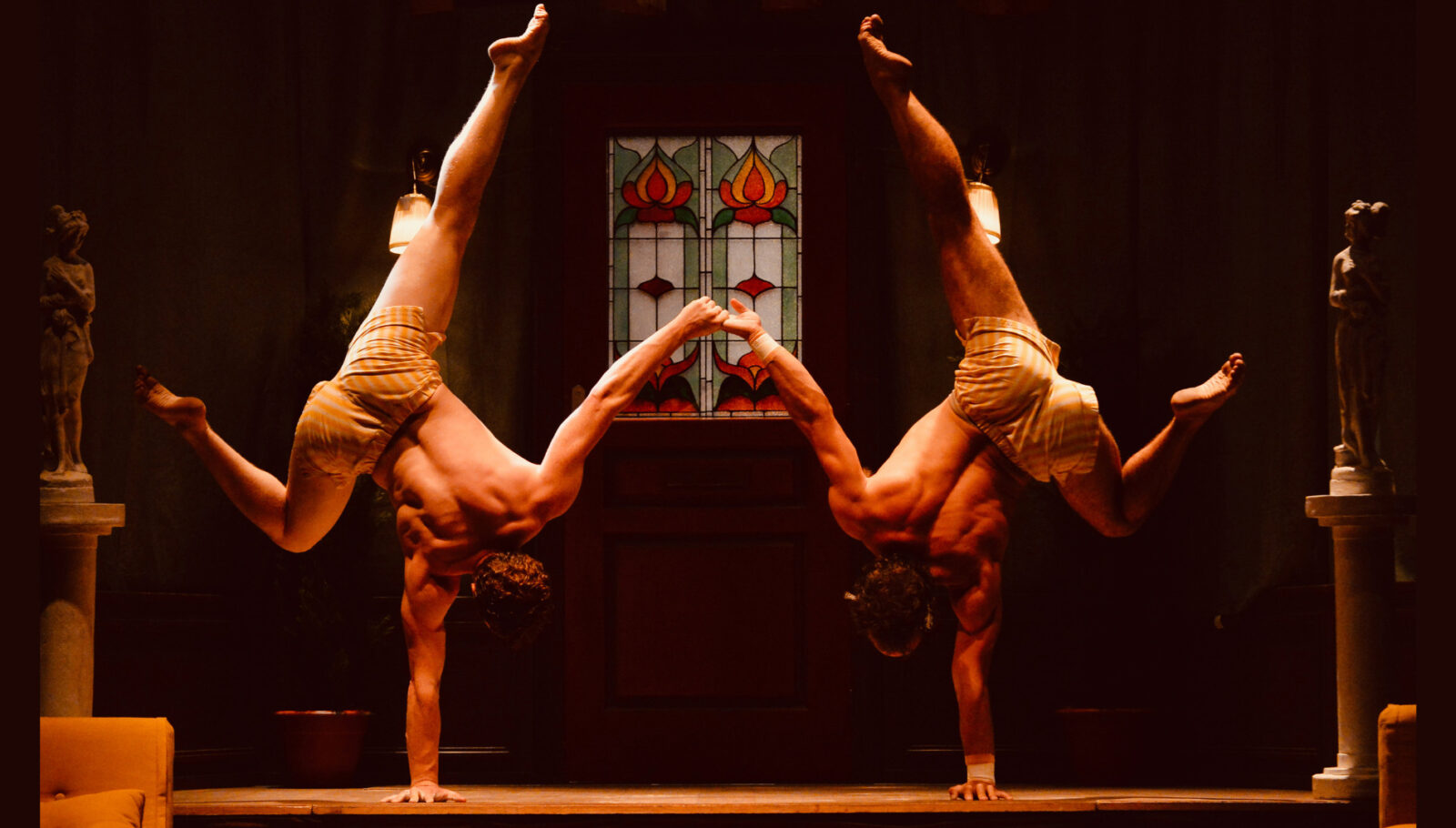What Defines a Circus Show?
Circus artists from all around the world have proven that there is more than one way to perfect skills, create pieces, and get on a stage. The definition of what it means to be a circus artist in 2023 and how individuals wear some kind of label was at the heart of Beyond Smiles & Splits’ last installment. If agreeing on one definition that applies to all is challenging, the same exercise is as much a head-scratcher when it comes to shows!
“Acrobats aren’t dancers, they are movers. They have to go up, they have to twist, turn around, and land on their feet. What I try to teach them is that, as they walk onto the stage, every step they take is just as important as the flip they make,” said choreographer Debra Brown in 1992, while working on Cirque du Soleil’s Saltimbanco.
There are some elements of dance in all circus shows. Movement and how each artist approaches it is the common thread linking all acts. There is no circus show if there is no movement. From the way a Russian bar flyer lets the act’s jazz track take over her hips and feet between tricks to how Chinese pole artists choreograph a duo like a true tango: where there is movement, there is dance.
In spite of dance’s undeniable influence on circus artists, can an acrobatic collective or a juggling piece be labeled a dance show? Can circus skills be overshadowed and somehow disappear when a production is strongly influenced by another art form? How does one qualify and quantify a show’s content to stamp it a “Circus show”?
As circus artists strive to make the art form grow and evolve, often by taking elements and inspiration from other art forms, “Not enough circus content” has become a recurrent rejection response from arts councils, theaters, and festivals.
Like all arts, the circus has its classics, but its community is constantly trying to embrace and adapt to the changes of time, audiences, and cultural references. Long gone are the days of going to the circus to see a gladiator face a lion in Rome, but a wire walker sliding into the splits or a fast-paced juggler running in with clubs spinning from his hands can still be seen under colorful tents and in intimate theaters. Many who found their niche in the latter were inspired, moved by the classics. They attended Ringling, Roncalli, or Knie’s matinée and caught the circus bug. A desire to express who they were, what circus inspired them, and to present more than tricks turned into a wind of change that has been blowing on stages and in creation studios for decades.

In the same way that modern dance companies faced scrutiny in the ‘80s and ‘90s and were told that their work was “not dance” for their lack of double pirouettes and point shoes, those who put circus skills on the backseat are deemed unworthy of that circus label. Circus historian Pascal Jacob once referred to Cirque du Soleil as “the new traditional circus because it’s the one that many are emulating.” After facing initial and mild resistance from some audience members convinced that a circus without animals was no circus, Cirque du Soleil and creators like Franco Dragone changed the mainstream view of what a circus was. Consequently, Cirque du Soleil is the definition of contemporary circus to many: an acrobatic, theatrical, and animal-free show where the acts are the stars. Dance, theater, and other art forms are part of the equation, but show-stopping acts have always drawn crowds.
What if the show ain’t about the acts? What if the piece’s strength doesn’t lie in how many positions one holds on one arm or on the number of balls thrown in a flash? Is this still circus or rather circus-inspired? As Debra Brown said: acrobats are movers. Therefore, directors and choreographers are often turning to circus artists for their productions. Diana Paulus’s 2013 Broadway revival of Pippin surprised theatergoers by integrating hula hoops, trapeze, hand-to-hand, and somersaults into Stephen Schwartz and Bob Fosse’s musical. Assisted by The 7 Fingers’ Gypsy Snider and an ensemble featuring several circus artists, Paulus turned the musical into a production that, at first glance, had more in common with Alegria than Elton John & Tim Rice’s Aida. Does integrating circus disciplines and working with professionals from the industry make 2013’s Pippin a circus show?
Cirque Le Roux, founded by acrobats who worked on Pippin, chose an unconventional approach with A Deer in the Headlights. The show has a very theatrical signature and each artist delivers equal amounts of spoken and tumbling lines. In this piece with a very cleverly written book, circus tricks find their way into the dialogues and feel like additional words or punctuation marks. The artists hardly freeze to highlight a stunt or to get applause. The dramatic plot and the relationships between the characters are forefront and the circus skills serve the story. Do the show’s theatrical approach, dramaturgy, and script make A Deer in the Headlights a play?
In these two shows, circus skills highlight the characters’ personality traits and better define who they are. They add momentum to scenes and give them a “Wow Factor,” but neither production is driven by acrobatic acts or “insert the applause here”-moments. On paper though, only the latter is defined as a circus show. One could argue that it had far more circus elements if they bothered to make the count. What’s the required percentage to make it as a circus show?

During the summer of 2023, Black Box Company, a German collective, premiered Catoptric, which they describe as a show where “the bodies of the performers are confronted to a set made of steel and mirrors. (…) Sometimes the performers move in dance and circus sequences on, under, and in front of the mirrors. This two-sidedness forms the ground of the concept and runs from the artistic approach to the music through all levels of the creative process.”
The cast of five occupies the entire stage in this performance. If they covered their feet with chalk prior to making their entrance, the black Marley would be white by curtain call. They jump, roll, run, throw and catch each other, hold handstands, and pair up for hand-to-hand moments, but there are no acts in the classical sense of the word. The team explored the set through and through and spent a significant amount of time doing movement research to choreograph this piece where dance and acrobatic skills intertwine. Once again, the focus ain’t on the tricks and on getting applause, but on movement quality as well as the performers’ energy and personality. Outside the Pfefferberg Theater, some spectators voiced that it felt more like a dance show while others praised the cast’s agility and their ability to sneak acrobatic feats into a very smooth and flowy choreography.
With the proliferation of artists coming from more varied backgrounds and a growing demand for circus performances, mastering a skill or having an artistic approach that will satisfy spectators and seasoned professionals is no longer the norm. Audiences’ tastes have also changed: a movie night no longer implies a pricy ticket and a 60-million dollar budget projected on a big screen. Some prefer streaming series or watching short films on YouTube. An acrobatic pair having as little contact as possible for 40 minutes feels more relevant than a 90-minute piece choreographed for NICA’s most recent graduates to some. Others still prefer a 7-minute foot juggling solo by a third-generation circus performer over a juggler who spends 10 minutes rolling a single ball on the floor. The broader the industry gets, the more categories, genres, and sub-categories are added to the mix by new creators. Coming up with an ultimate definition of what a circus show is practically impossible in this day and age. It might be up to artists and companies, like Black Box, to clearly describe what their work is about to avoid confusion and disappointing audiences. In the end, the more exposed we are to all forms, the better we know what we respond to, what we have no interest in, and, hopefully, how to formulate our opinions on what defines a circus show.
Main image: Frantisek Ortmann, A Deer in the Headlights...
Do you have a story to share? Submit your news story, article or press release.





